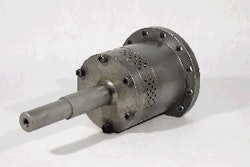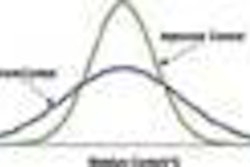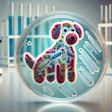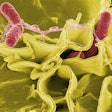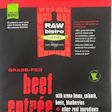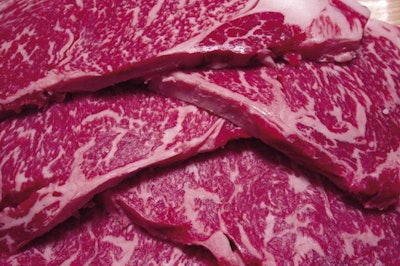
Biogenic amines play important roles in many human and animal physiological functions such as regulation of body temperature, stomach volume, stomach pH and brain activity (ten Brink, 1990). Amines are low-molecular-weight organic bases which can be formed and degraded during the normal metabolism of animals, plants and microorganisms. They are essential for cell growth, and it has been suggested that these molecules promote the synthesis of DNA, RNA and protein, stabilization of ribosomes and increased amino acid uptake by cells (Smith, 1990).
Biogenic amines are produced by degradation of the corresponding free amino acid (see Table 1) precursor in foods. This reaction is catalyzed by bacterial amino acid decarboxylases. Prerequisites for a considerable amount of biogenic amine formation are:
The availability of free amino acids;
The presence of decarboxylase-positive microorganisms; and
Conditions that allow bacterial growth.
Toxicity
Determination of the exact threshold where these biogenic amines become toxic is extremely difficult because it is dependent on the detoxification efficiency of the individual. Upper limits of 100 mg histamine/kg in foods; 2 mg histamine/liter in beverages; and 100-800 mg/kg tyramine and 30 mg/kg phenylethylamine in foods have been suggested. Presently, fishmeal is the only petfood ingredient that typically has a biogenic amine limit specification, and this is for histamine only.
The most well-known health impact of biogenic amines is histamine poisoning, which occurs a few minutes to several hours following the ingestion of foods containing high levels of histamine. Primary symptoms in humans are skin rash, nausea, vomiting, diarrhea, etc. The toxicity of histamine is potentiated by other biogenic amines (agmatine, putrescine, cadaverine, anserine, spermine and spermidine).
Impact on pets
Humans may consume an occasional meal where biogenic amines are elevated either due to poor handling or contamination with a decarboxylating bacteria. Pets are more likely to encounter biogenic amines in a prepared diet where the main protein source is fish, chicken or a meat by-product. Healthy adult cats and dogs may be able to detoxify biogenic amines present in the diet; however, kittens and puppies, reproducing females and ill animals could potentially be more prone to adverse effects when consuming biogenic amines on a daily basis.
Histamine itself, along with other vasoactive biogenic amines, is frequently present in petfoods, particularly those foods containing fish products. Though the levels of these substances in petfoods are not believed to be high enough to induce a non-allergic reaction, feeding a petfood containing these chemicals may predispose some dogs to developing allergic food reactions by lowering the dog's tolerance threshold to certain food allergens (Davol, 2001).
In studies involving companion animals, dogs did not show adverse effects following oral administration of histamine alone at doses of 20 mg/kg; however, the combination of histamine with spoiled tuna did elicit emesis even at histamine doses of 1-10 mg/kg. This shows that the presence of other biogenic amines can inhibit intestinal histamine breakdown (Taylor, 1986).
Quality indications
The presence of biogenic amines in petfood indicates that an ingredient has undergone bacterial spoilage. The method of handling of animal by-products prior to chilling, freezing, extrusion, retorting or rendering may put these materials at risk of biogenic amine formation. Proteolytic enzymes in these materials from either viscera or bacteria can generate free amino acids available for subsequent decarboxylation. Bacterial contamination can occur in the conveyors, trucks, tanks and other equipment that the by-products contact. Conditions are thus ideal for biogenic amine formation to take place until the ingredient makes its way into a high-temperature petfood extrusion or retort process where the enzymatic process is terminated.
Studies have demonstrated that biogenic amines can accumulate to reach toxic levels even at low temperatures. This is due to initial storage at higher temperatures (10-25ºC) where the decarboxylase is generated and then continues to produce biogenic amines when the temperature is reduced to 5ºC or below (ten Brink, 1990; Klausen and Huss, 1987). Chicken, meat or fish by-products that have experienced even a short period of high-temperature abuse prior to chilling could therefore generate significant biogenic amine levels before processing. Biogenic amines are heat stable, and decarboxylases may remain active even after pasteurization. Therefore, once formed, the amount of amine formed will not be reduced during processing and may even increase during storage (ten Brink, 1990).
Biogenic amine levels can be directly correlated with bacterial counts and food freshness. Documenting time/temperature profiles and the resulting biogenic amine levels will establish sound quality assurance parameters for classes of fresh and frozen ingredients such as:
Fresh chilled, collection and transit time prior to chilling should be limited or eliminated to avoid mesophilic growth;
Frozena reduced microbial count due to freezing will not reflect the decarboxylase and amines that may have developed in abused material;
Hygieneorgan meats are sterile when harvested, and therefore good hygiene of transfer and processing equipment will reduce microbial growth; and
Freshness agents, when time, temperature and hygiene are not ideal, classic food additives may be necessary in order to retain freshness.
Biogenic Amine Index
It has been proposed that the sum of histamine, tyramine, cadaverine and putrescine can be used as a quality indexthe Biogenic Amine Index (BAI), which has shown a correlation to both time of storage and sensory assessment. The amounts of histamine, putrescine and cadaverine usually increase during spoilage of meat, whereas the amounts of spermine and spermidine decrease during this process.
The Biogenic Amine Index (BAI) is defined as:
BAI = (histamine + putrescine + cadaverine)
/ (1 + spermine + spermidine)
Meat with a BAI value below 1 is considered to be top quality, whereas BAI values above 10 indicate very poor quality. Products in which lactic acid fermentation has taken place may contain considerable amounts of putrescine, cadaverine, histamine and tyramine. It is important to consider the levels of tyramine, since high content of this amine are related to toxicological problems (Veciana-Nogues, 1997).
BAI numbers show that the proposed quality index directly correlates with the aerobic plate counts (see Table 2). A BAI of 2 corresponds to an APC of 104-106 cfu/gram, while an 11 is at 107 and the high BAI of 40 shows an elevated 108 cfu/gram APC. The BAI calculations in Table 2, although not comprehensive, suggest that the 300 mg/kg total biogenic amine content may be a reasonable quality guideline for petfood ingredients.
The total biogenic amine limit being considered in fish for human consumption is 300 mg/kg, with histamine at a current 50 mg/kg action level. Literature does not define toxic levels of biogenic amines for companion animals, but does establish the potentiating effect of several in combination and also documents their potential for reduced growth and physiological impact in production animals.
Limiting biogenic amines in petfood ingredients would reduce any unidentified adverse impact on the pet, regardless of lifestage or disease state. Processing and handling measures taken to reduce bacterial degradation, and thus biogenic amine formation, would seem consistent with the industry's dedication toward promoting the longevity and well being of companion animals.

